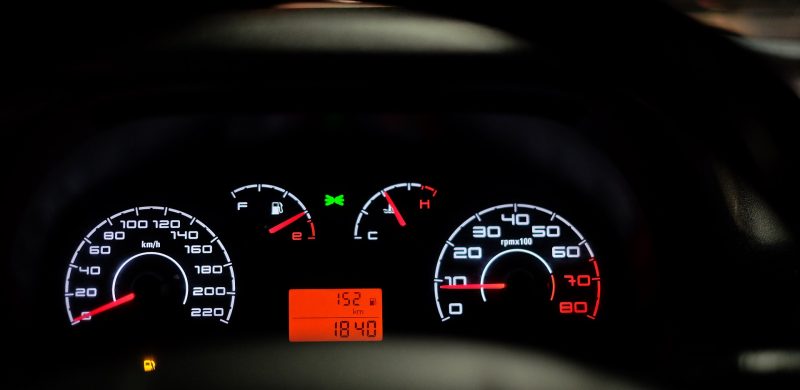
Self-driving cars may not be available for the masses yet, but car manufacturers are already decking out their newer vehicles with some innovative technologies.
The most high-tech features to look out for are:
Vehicle-to-vehicle communication
Vehicle-to-vehicle (V2V) and vehicle-to-infrastructure (V2I) communication are a type of communication technology that lets cars talk to other vehicles, as well as surrounding infrastructure like traffic lights. This is important because as cars become more autonomous, they will need to be able to communicate with other cars on the road to operate more safely.
In the near-term, V2V and V2I will let cars share vital information to help human drivers. For example, the 2017 Mercedes E-Class uses V2V communication to relay data about traffic, climate conditions, and other critical information about the road ahead to other Mercedes vehicles on the road.
Bluetooth connectivity
Bluetooth allows the driver the ability to play music from their phone in the car. For example, in GM’s Chevrolet Bolt Bluetooth connectivity lets the car automatically detect the user’s smartphone. This lets you stay connected to the vehicle always via the car’s app. Owners can do things like check the car’s charge, start the vehicle and pre-condition the cabin.
Volvo also plans to use Bluetooth connectivity to replace your keys with your smartphone. Basically, the car would detect your smartphone via Bluetooth and unlock your vehicle. The Swedish company has plans to make this feature available in at least one of its vehicles during 2017.
Wi-Fi and LTE 4G connectivity
More car manufacturers are beginning to offer Wi-Fi and LTE 4G connectivity in their newer vehicles. However, you’ll still have to pay for whatever data plan you opt for.
Wi-Fi and LTE 4G basically turns your car into a hotspot, allowing for you to connect several devices to the network. This means passengers can easily stream music, video, and surf the web without having to worry about killing the battery of your mobile device.
Apple CarPlay and Android Auto compatibility
Being able to connect with your apps in the car has become crucial to keep people from staring at their smartphones while driving. Thankfully, many car makers are now making their vehicles compatible with Apple CarPlay and Android Auto. These systems allow you to access a variety of supported apps right through your car’s infotainment center.
For example, while connected to Apple CarPlay, you can control Spotify, make hands-free phone calls, and even dictate messages to your friends via Siri. You can view a full list of vehicles now supporting Apple CarPlay on Apple’s website. You can view automakers supporting Android Auto online.
Wireless charging capabilities
Automakers are slowly but surely introducing wireless charging into their new vehicles. However, this feature only works with compatible smartphones, which are almost entirely Android devices and new iPhones that were announced this year.
Back-up cameras
Back-up cameras are one of the greatest innovations to come to automobiles. Once you shift to reverse, the screen automatically shows you what is behind you. It’s incredibly handy when getting in and out of tight spaces, and helps ensure you don’t hit something or someone behind you.
Blind spot awareness
Monitors the area alongside and behind the vehicle so if it detects another car in the blind spot area it will display a warning signal in the glass of the side mirror. In some vehicles, like in the 2017 Mercedes E-Class, the system will even alert the driver with a warning sound if the driver continues to change lanes in a dangerous situation.
Over-the-air updates
As cars become increasingly connected, software updates are becoming more critical. Software updates not only enable new features in your car, like updated map information, but updates also patch dangerous software glitches or bugs.
Currently, most vehicles must be taken to a dealer to receive software updates, or an owner must download the software to a thumb drive to install the update in their vehicle. Tesla already rolls out its software updates over-the-air, and other major car makers are planning to do the same with upcoming vehicles. Volvo, for example, plans to implement the tech for over-the-air updates in its first production vehicles in 2017.
In fact, the total number of vehicles in operation with mapping over-the-air updates is expected to grow to almost 32 million by 2022, according to the research firm IHS.
Electric powertrain
Electrified cars are gaining serious momentum. Concerns about climate change along with advancement in battery technology have helped push automakers to get into the electric car game. In fact, most of the upcoming electric vehicles that automakers have announced will have an electric range of 200 miles or more.
Tesla also plans to begin deliveries of its first mass-market electric car, the Model 3, at the end of 2017 and in 2018. The car will be priced at $35,000 before tax incentives. Audi, Porsche, Volkswagen, Volvo, and Ford are all also planning to either launch an all-electric car or expand their offerings of electrified vehicles by 2020.
Digital instrument panel
Many carmakers are adopting digital versions of the vehicle’s instrument panel these days because it lets people customize the display.
For example, the digital instrument panel can be used to show traditional things, like the speedometer or the tachometer, or it can be used to display navigation information right in front of you. So, you can get more information shown right in front of you, making it easier to drive safely.
Night vision
Seeing the road while driving at night isn’t always easy, especially when you are cruising down a dark, lonely highway. But cars with night vision can alert the driver to things that may not be visible.
For example, Audi’s night vision feature uses thermal imaging to show the driver if an animal or person is nearby by displaying their presence on the instrument cluster. BMW, Cadillac, and Mercedes-Benz also offer various forms of night-vision on select models.
Heads-up display
A heads-up display is incredibly useful because it lets you view navigation information and other vital data directly in your line of vision, helping you to always keep your eyes on the road. For example, in the 2017 Audi Q7, the driver can see the current speed, speed limit, and navigation information.
A semi-autonomous driving system
Semi-autonomous driving systems, like Tesla’s Autopilot, are slowly but surely making their way to market in newer vehicles. These systems let your car handle steering and braking while driving on the highway in certain conditions.
For example, the 2017 Mercedes E-Class is equipped with a semi-autonomous system called Drive Pilot that lets the vehicle drive itself on highways at speeds of up to 130 miles per hour. The Drive Pilot system also includes a function called Distant Pilot Distronic, which is basically a fancy cruise control that lets the car follow the car in front of it at a set distance or speed.
However, it’s important to note that semi-autonomous systems like Drive Pilot or like Tesla’s Autopilot do not make these cars truly driverless. Rather, these systems are aimed at helping owners drive more safely. So, it’s important to always keep your hands on the wheel when a semi-autonomous system is activated.
Self-parking
The highway isn’t the only place some cars can drive themselves, though. Some newer cars have systems that let them park themselves in certain situations. For example, Tesla vehicles with Autopilot, the 2016 BMW 7 Series, and the 2017 Mercedes E-Class all have a function that lets the driver remotely park or remove the vehicle from a parking space.
While this feature can only be used on private property, it’s still pretty cool and can bring the vehicle to you so you don’t have to go fetch it.
Automatic emergency braking
Automatic emergency braking is a safety feature that kicks in just before an imminent collision, helping the driver avoid impact. Most vehicles with automatic braking will also alert the driver with an audio or visual warning before a collision. However, if the driver doesn’t respond, then the car will automatically apply the brakes.
This function is becoming more standard in new vehicles. In fact, in September 2015 10 of the biggest automakers committed to making automatic emergency braking standard. These car makers include Audi, BMW, Ford, General Motors, Mazda, Mercedes Benz, Tesla, Toyota, Volkswagen, and Volvo.
@nelson.madzima





